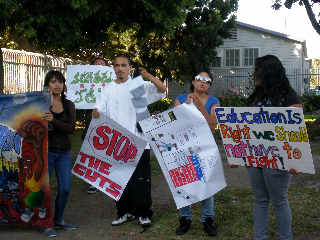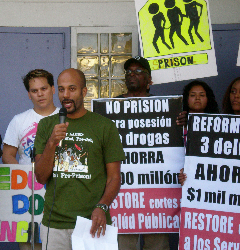This is the third of eight write-ups from freshman students at Manual Arts High School. Some participated in weeks-long projects about animal abuse, drugs, gangs, prostitution and racism. Part of their projects included surveys they created for their communities. After they gathered information, all of the groups presented their findings at a school presentation. Two days later, each group wrote about their experiences during an Intersections: The South Los Angeles Report mentoring and writing workshop.
Prostitution is a concern in our community, and we would like to change or help in any way we can. Our main question was, “How does prostitution affect women in our community, and would it help if we made it legal?”
While doing this project, we learned that prostitution has been seen by a lot of students at Manual Arts High School. We handed out 136 surveys to students, and our team visited about 10 classrooms. We discovered that prostitution is in a lot of our communities.
We also learned that making prostitution legal, or giving it its own area, will not make our streets safer. Our group thinks this because we believe a lot of people will still prostitute themselves for drugs or other illegal substances.
Our group interviewed Mr. Irving, our principal, and he was concerned. He asked us why we had chosen this topic, and we answered that we were concerned about our younger family members. We told him we wanted to know how to explain to them why these women do what they do. We discovered that most prostitutes do what they do because they are poor, and they have no other ways to get money. Instead of helping them, the government is investing money in prisons and the war.
Some women do not have any jobs, and they need to pay rent, bills, and food and water to support their children. But prostitution is basically slavery for women.
Wherever there have been bad economic situations, there has been prostitution.












 The students will spend one week becoming familiar with university-level work, learning theories they will talk about and putting together their research design. The last four weeks are spent conducting their research and analyzing their data.
The students will spend one week becoming familiar with university-level work, learning theories they will talk about and putting together their research design. The last four weeks are spent conducting their research and analyzing their data.




